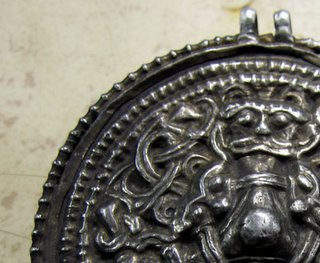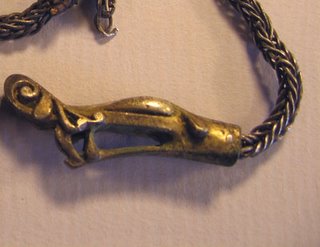Gotta love a little site destruction

You might think that archaeologists would hate anything that disturbs ancient deposits, mucks around with finds and exposes them to the elements. Right? Actually, no. In many cases we love it.
Nobody wants large-scale destruction, such as unsupervised bulldozing for open-air mining, highways, airports or housing estates. But smaller nibbles are the lifeblood of archaeological discovery.
Bring on shoreline and riverbank erosion, small-scale gravel extraction and peat cutting, gardening, ploughing, tree-toppling storms, forest fires and burrowing animals! Without them we wouldn’t know half of what we know.
A year ago I went to Ribe, Denmark to study Viking Period casting moulds. Claus Feveile and the other good people of the town museum made me feel welcome. And when I was done with the moulds, I had a look at the town.
One of the sites I visited was riddled with molehills. It had been raining, so solid objects had been washed out of the dirt and were clearly visible. I checked out a number of hills as I strolled around, finding a lot of brick fragments and a little flint. And then I saw something glinting in the sunshine. A gilded filigree decorative mount from the 15th/16th century.
Claus thought I was joking when I came back into his office with the find. I’d only been gone for about an hour. But he took out his GPS navigator, we went over to the site and he took the mole hill's coordinates. And the mount became danefæ, "goods of the dead", property of the Danish state.
So mole hills merit some attention, as do ploughed fields after rain and the root tangles of toppled trees. Look long enough and you’ll find something interesting. And then e-mail a pic to your friendly local archaeologist!
[More blog entries about archaeology, Denmark, Sweden.]











